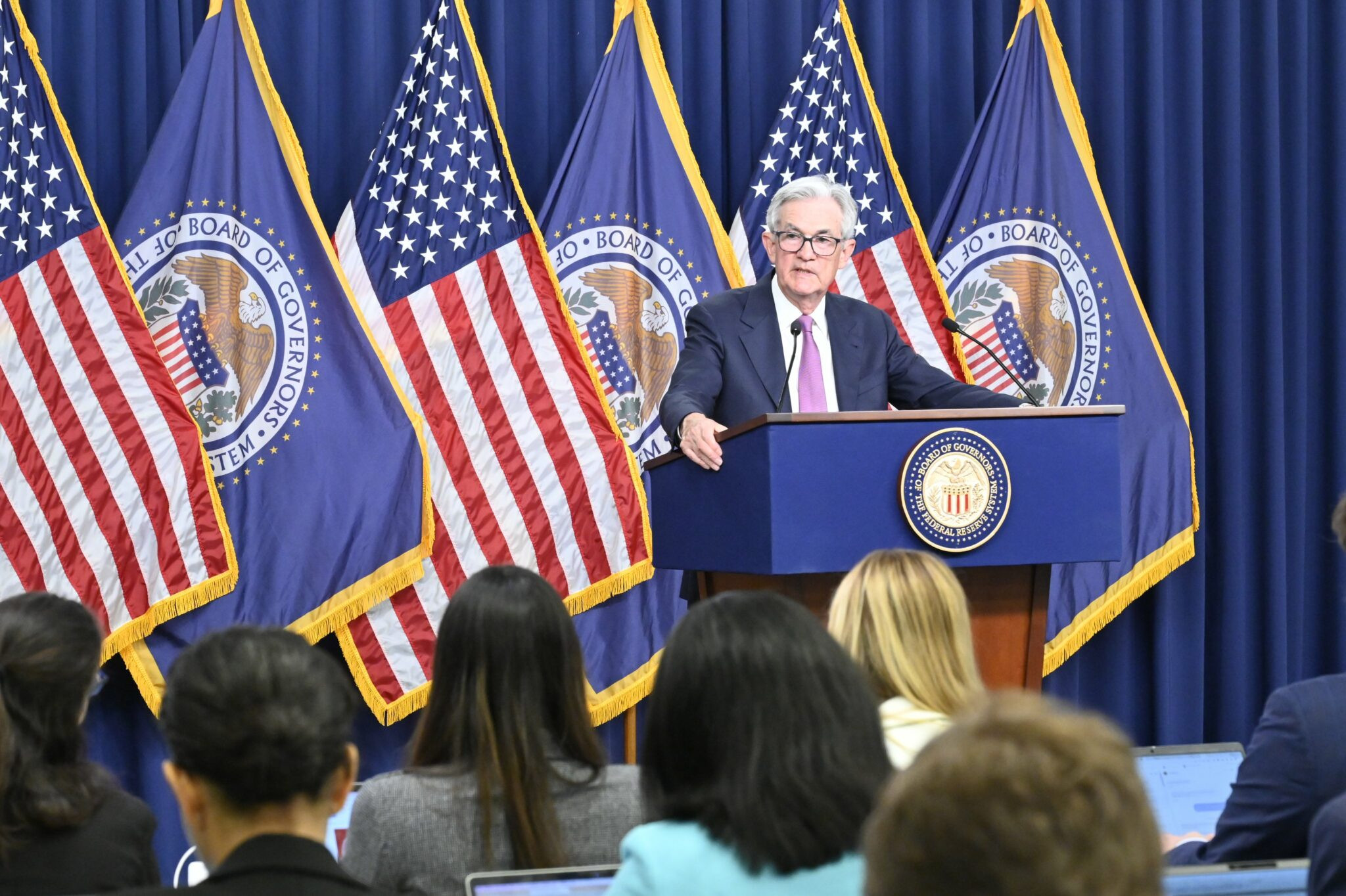Jerome Powell, the Federal Reserve chair, will deliver remarks as inflation cools and growth holds up — but as labor market weakening threatens to interrupt the soft landing.
Two years ago, Jerome H. Powell took the podium at the Federal Reserve Bank of Kansas City’s annual conference at Jackson Hole in Wyoming and warned America that lowering inflation would require some pain.
On Friday, Mr. Powell, the Federal Reserve chair, will again deliver his most important policy speech of the year from that closely watched stage. But this time, he is much more likely to focus on how the Fed is trying to pull off what many onlookers once thought was unlikely, and maybe even impossible: a relatively painless soft landing.
Both the Fed and the American economy are approaching a crossroads. Inflation has come down sharply since its 2022 peak of 9.1 percent, with the year-over-year increase in the Consumer Price Index falling to 2.9 percent in July. Given the progress, the critical question facing Fed officials is no longer how much economic damage it will take to wrestle price increases back under control. It is whether they can finish the job without inflicting much damage at all.
That remains a big if.
Consumer spending and overall economic growth have held up in the face of high interest rates, which are meant to cool demand and eventually weigh down inflation. But the job market is beginning to weaken. Revisions released this week showed that employers hired fewer workers in 2023 and early 2024 than was previously reported. The unemployment rate rose to 4.3 percent in July, up from 4.1 percent in June and 3.5 percent a year earlier. The latest jump could be a fluke — a hurricane messed with the data — but it could also be an early warning that the economy is hurtling toward the brink of a recession.
That makes this a critical moment for the Fed. Officials have held interest rates at a two-decade high of 5.3 percent for a full year. Now, as they try to secure a soft and gentle economic landing, they are preparing to take their foot off the brake. Policymakers are widely expected to begin lowering rates at their meeting in September.
Mr. Powell could use his speech to confirm that a rate cut is imminent. But most economists think that he will avoid detailing just how much and how quickly rates are likely to drop. Fed officials will receive a fresh jobs report on Sept. 6, providing a clearer idea of how the economy is shaping up before their Sept. 17-18 meeting.
What to Watch For
The speech comes at a delicate time for the U.S. economy, as recession fears briefly spiked earlier this month when the unemployment rate rose to a 3-year high, with further questions raised about the strength of the labor market Wednesday when the Bureau of Labor Statistics said the federal government overestimated the number of jobs created for the 12-month period ending in March by 818,000. It also comes in the waning months of a presidential election, where former President Trump has made hammering the incumbents—first President Biden, and now the Democratic candidate, Vice President Harris—about the economy’s turmoil (especially inflation) in the past four years.
“A data dependent Fed who is relying on faulty data is dangerously close to making a policy mistake that will turn a slowing economy into a recession,” explained Laffer Tengler Investments CEO Nancy Tengler in emailed comments Wednesday, adding the “important” Jackson Hole speech was now “more important” than it was prior to the downward job revisions.
The real juice from Powell’s speech will be any hints he gives as to how quickly and by how much he expects to cut rates: Traders will closely look for any insight into whether Powell expects to lower rates by 25 basis points or 50 basis points next month. If it’s 50 points, it could indicate the Fed is taking acute action to prevent the economy from falling flat, considering the only times over the last 20 years the Fed cut rates by that amount at a single meeting came during the 2007-08 financial crisis and March 2020, at the beginning of the COVID-19 pandemic.
They are also looking for hints about where the federal funds rate will wind up when the dust settles, a major question mark considering the present range of 5.25% to 5.5% are the highest rates in the U.S. since 2001.
Market Reactions
Powell’s Aug. 2022 address famously sent chills throughout financial markets as he warned about the need for lengthy, restrictive monetary policy to slow inflation. The S&P 500 fell 3.4% on the day of his 2022 speech at Jackson Hole, 6.5% in the week after, and 12% in the month after the appearance. Despite that chilling memory, the symposium has actually typically boosted stocks in recent years, with the S&P gaining a median of 0.8% in the week following the event dating back to 2010, according to Bank of America strategists.
A lot has happened since Powell last addressed the public July 31 following the most recent FOMC meeting. The weak Aug. 2 jobs report, as well as news of the Bank of Japan taking a divergent path from other notable central banks and actually pursuing rare rate hikes, caused markets to go into a tizzy, with the S&P sinking as much as 7% from July 31 to Aug. 5 as investors braced for a potential recession, emboldening critics that the Fed acted too slowly to stick a “soft landing” in which inflation abated and the U.S. avoided a downturn typically associated with such a scenario. But the last two-and-a-half weeks brought a steady stream of encouraging economic news, including weekly unemployment claims, monthly retail sales and monthly inflation releases which all topped economist estimates. That calmed nerves about an imminent recession and caused equities to bounce back, with the S&P actually up in August through Thursday.
The Stakes are High
This year's Jackson Hole gathering will be a critical moment for the Fed to demonstrate its commitment to restoring price stability. But it will also be a time for Powell to reassure markets that the Fed is prepared to navigate a potentially difficult economic landscape. His words will be closely scrutinized for any signs of a change in course, and could have significant implications for the direction of the U.S. economy in the months to come.
The Countdown to Jackson Hole
As we approach Powell’s speech at Jackson Hole, market participants are already showing signs of nervousness. The S&P 500 pulled back on Thursday, giving up some ground after a recent rally as investors readied for commentary from Federal Reserve Chair Jerome Powell anticipated later this week. The broad index slipped 0.6%, moving away from trading within striking distance of the all-time intraday high set in July. The Dow Jones Industrial Average lost 149 points, or 0.4%, while the Nasdaq Composite shed 1%.
The Importance of Powell's Speech
The Federal Reserve is in a tricky spot as it seeks to navigate a complex economic environment. Inflation has cooled somewhat, but the job market is showing signs of weakness. Powell’s speech at Jackson Hole will be a key moment for the Fed to show it is prepared to address both of these challenges. His words will have a significant impact on investor sentiment and the direction of the U.S. economy.
## Looking Ahead
The Jackson Hole symposium is a key event on the economic calendar. It is a time for central bankers to share their views on the global economy and monetary policy. Powell’s speech will be closely watched for any clues about the Fed’s next moves, and his remarks could have a significant impact on the financial markets. As we look ahead to Powell’s speech, it is clear that the stakes are high. The Fed’s actions in the months to come will have a profound impact on the U.S. economy, and Powell’s words at Jackson Hole will be a key signal of how the Fed plans to navigate these turbulent times.
The Fed's Balancing Act
The Federal Reserve is facing a daunting task. It must balance the need to control inflation with the need to support economic growth. Powell’s speech at Jackson Hole will be a crucial opportunity for the Fed to show it is capable of achieving this delicate balance. His words will be closely scrutinized for any signs of a shift in the Fed’s thinking, and they could have a significant impact on the direction of the U.S. economy.
The Road Ahead
The U.S. economy is at a crossroads. Inflation has come down, but the job market is showing signs of weakness. The Fed will need to carefully navigate this complex environment to avoid a recession. Powell’s speech at Jackson Hole will be a key moment for the Fed to show it is prepared to address these challenges. His words will be closely watched for any signs of a change in course, and they could have a significant impact on the direction of the U.S. economy.
















